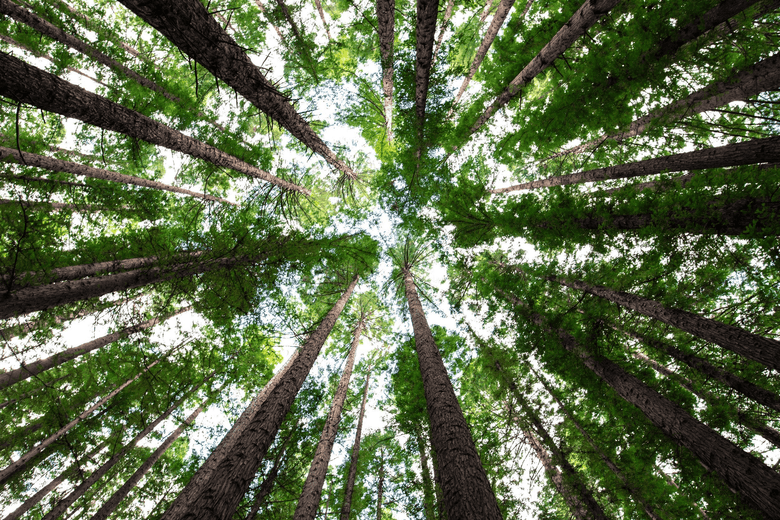We live in a time where it’s easy to feel too small to make an impact on the world. I know that feeling of insignificance too, but it’s a lie. Small changes come together to form big changes over a lifetime.
Even minor daily adjustment to make our coffee more eco-friendly can be significant across years and decades.
Landfills are a major problem in the United States. They slowly pollute our watersheds, destroy habitats, and make large areas of land useless - all unnecessarily. We love our disposable products, because we don’t see what they create when we’re finished with them.
But the world’s not our trashcan, and our beautiful planet deserves our responsible care. At JavaPresse, we care deeply about the environment and want you to join in on our mission to embrace small changes to produce a better world.
Let’s look at some ways we can adapt our coffee habits to be more environmentally friendly.
And remember: every journey is built out of little steps.
1. Avoid Single Serve Cups At All Costs
Single serve cups and pods are possibly the most detrimental form of coffee on the environment. The convenience of K-Cups and Nespresso pods has dirty consequences.
In 2015, Green Mountain Coffee Co (Keurig) produced 10 billion (10,000,000,000) K-Cups.
If you set them next to each other in a straight line, they would wrap around the globe.
10.5 times.
In a single year, we wrapped the entire world with K-Cup waste 10.5 times. That doesn’t even include Nespresso and other pod manufacturers.
Single serve pods are an environmental nightmare. Not only that, but they are relatively expensive, brew sub-par coffee, and pull you away from experiencing coffee to its fullest.
Read: Getting Started With Specialty Coffee: Essential Equipment
Please, avoid disposable coffee pods at all cost.
2. Get A Reusable Filter
While there are several, the most compelling reason to avoid paper filters is that a large portion of them are chlorine-bleached and end up in landfills. These filters then seep trace amounts of dioxins, chemicals toxic to human health, into watersheds, which distributes the dioxins to growing plants.
At the very least, look for TCF (total chlorine-free) or PCF (processed chlorine-free) labels on filters. However, reusable filters eliminate paper waste entirely, chlorine-free or not. Here are a few examples of these eco-friendly brewers:
- French Press
- Stainless Steel Pour Over Cone
- Aeropress + Steel Filters
Coffee brewed with metal filters has a rich flavor and full mouthfeel. If not for the eco-friendly factors, try them for the flavor!
3. Use Your Own Mug
Another super simple way to reduce paper waste is to use your own mug. This method doesn’t contribute to landfill crowding with paper cups, and makes you feel right at home.
For many years, Starbucks promised to make a recyclable cup, but has failed to do so. It takes about 20 years for the standard Starbucks cup to decompose. That may not sound like such a long time, but when you consider that the USA goes through 60 billion of those cups per year, the problem becomes a lot bigger.
Do the world a favor and start taking your own mugs and tumblers to coffee shops. The baristas will be glad to play a small part in reducing paper waste and you’ll feel proud of your eco-friendly coffee habit.
Read: Fair Trade VS Direct Trade Coffee: Which Is Better For Coffee Sustainability?
4. Brew Manually
Manual coffee brewers stand in defiance against another one of the great challenges to eco-friendly coffee: auto drip coffee makers.
If you take a stroll to your neighborhood supermarket and look at the coffeemakers, you’ll realize a couple things. Firstly, they are cheaply priced. Secondly, they are cheaply made.
These coffee pots are plastic-guzzlers that are built to break, requiring the manufacturing of more and more of them. It’s an endless cycle of wasteful manufacturing.
Manual coffee brewers, on the other hand, are simply constructed and built to last. They are made of few parts (often just one), rarely require replacing, and can serve you for decades.
Manual coffee brewing is amazing in a variety of ways, but their eco-friendly properties are one of the chief advantages (especially if they use a metal filter).
Read: How Manual Coffee Brewing Can Change Your Life
5. Buy From The Right People
Not all coffee roasters treat their craft with the same respect. Some carry very little about their environmental footprint. Some rigidly control their footprint with incredible precision.
I encourage you to look into the practices of your local roasters to find which ones are doing a good job of reducing, reusing, and recycling. Support the efforts of those roasters, and put pressure on the others to play their part.
Read: How Much Should You Pay For Coffee Beans?
---
Small steps make up every journey. Pick one of these ways to make your coffee more eco-friendly and stick with it. Maybe add another way or two later on.
We are all responsible for our planet and our own footprint. It doesn’t matter whether we drink one or five cups per day, we all play a role.
Happy brewing!




